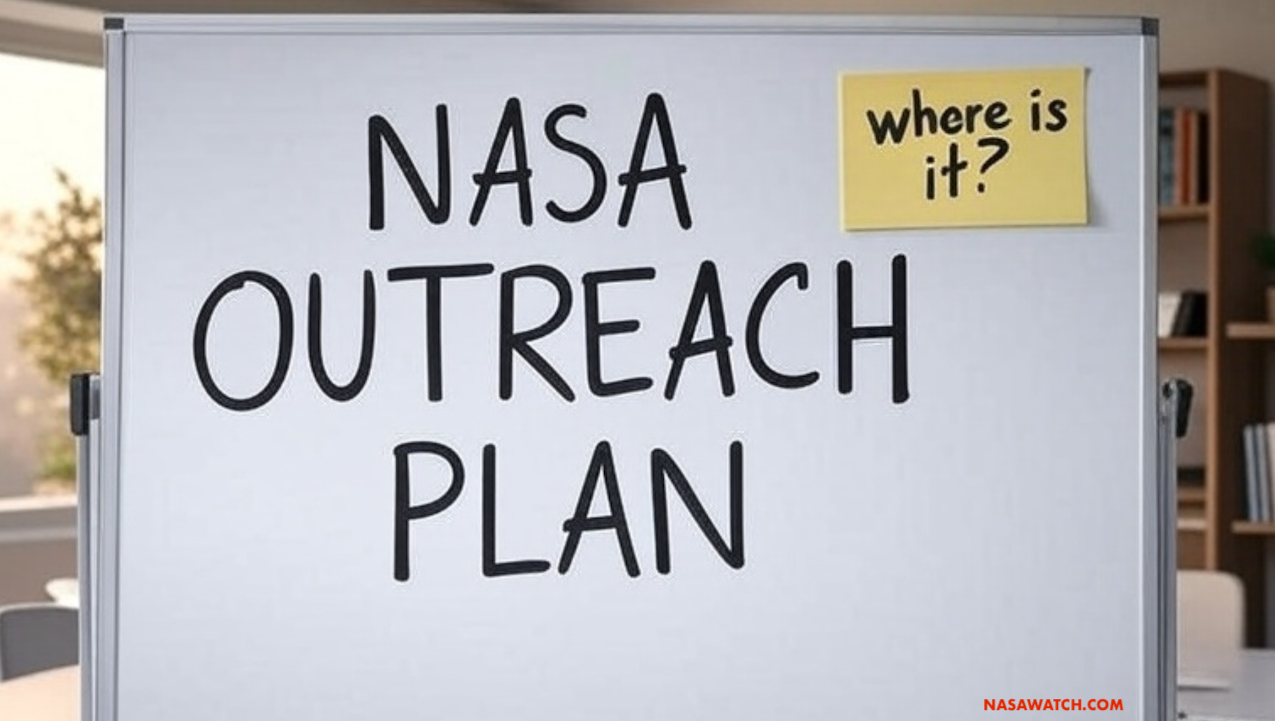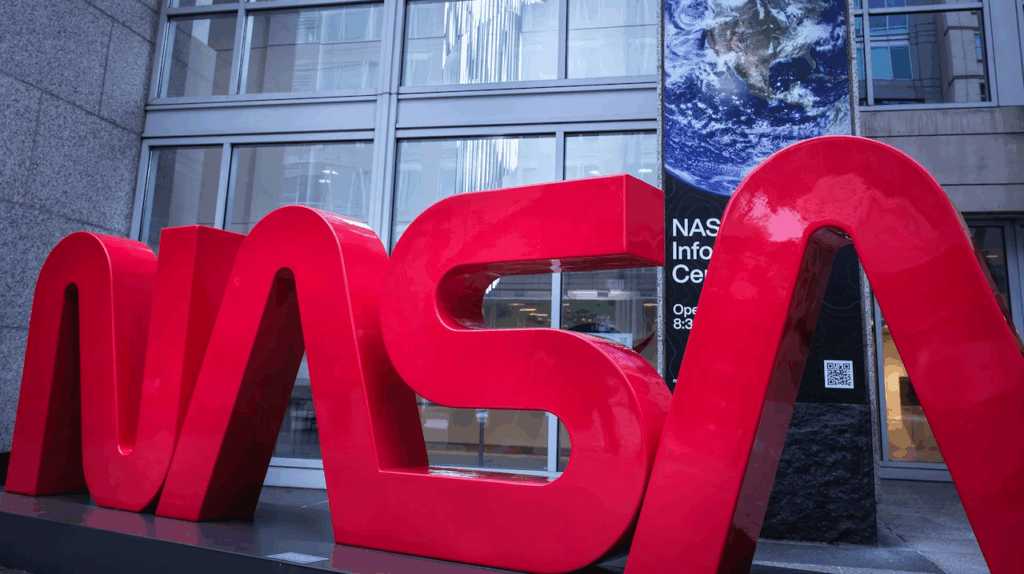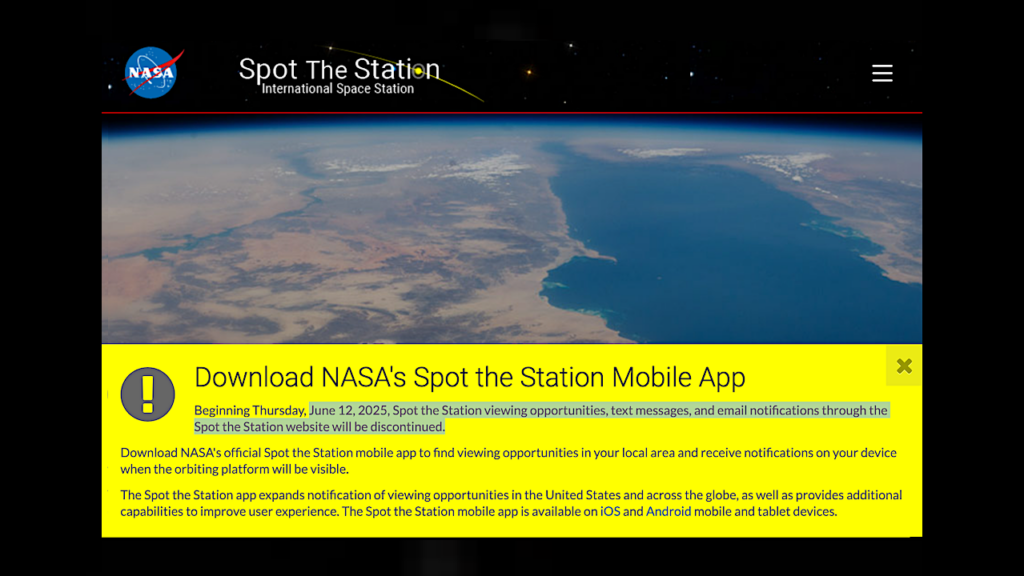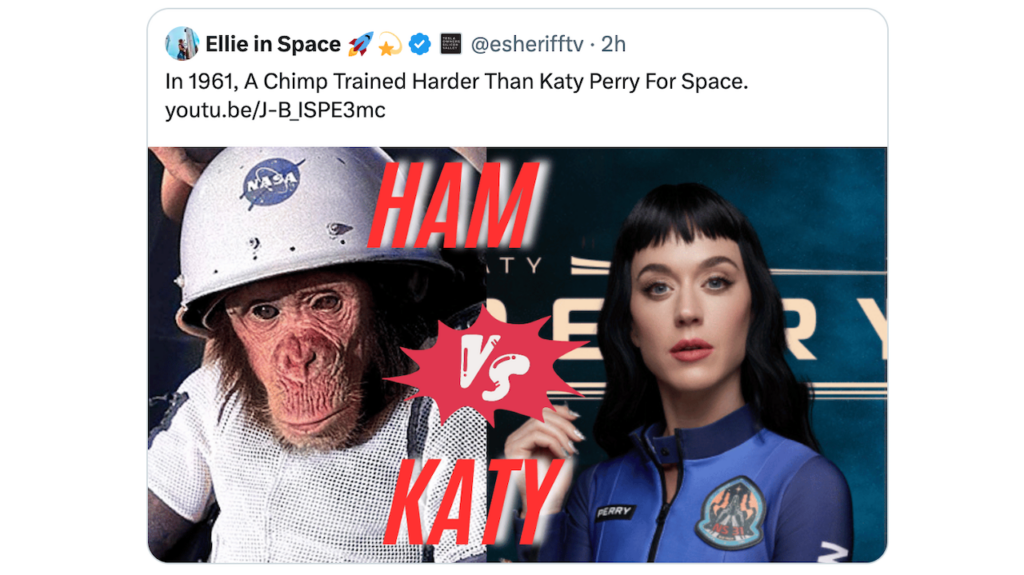NASA’s 0.01% Outreach Plan

Keith’s note: NASA just issued a standard paperwork thing in the Federal Register today. It is a note about some questionnaire they want people to fill out egarding special NASA events that they went to. Sounds innocent enough and it is good that NASA would want feedback. Except NASA states that they are only worried about less than 0.01% of the American public and that they are going to spend more than one government employee’s annual hours looking at an expected 650 responses? What about looking into what the rest of the nation thinks about how ‘Great’ NASA is or should be? (more below)
The note says “The National Aeronautics and Space Administration (NASA) is committed to effectively performing the Agency’s communication function in accordance with the Space Act Section 203 (a) (3) to “provide for the widest practicable and appropriate dissemination of information concerning its activities and the results there of,” and to enhance public understanding of, and participation in, the nation’s space program in accordance with the NASA Strategic Plan. The Space Act of 1958 directs the Agency to expand human knowledge of Earth and space phenomena. Organizing outreach events is one way NASA intends to leverage excitement about the nation’s space program and expand human knowledge of Earth and space phenomena.” Sounds good to me. Agencies get asked to do this sort of paperwork all the time – for paperwork reasons.
Then there is the whole data thing. Google just told me that there are ~347,000,000 Americans and that ~138,000,000 of them will file tax returns. Every taxpayer directly or indirectly funds NASA. All of these people fund all of NASA. But how do they benefit from that? Many ways of course – even though NASA Is woefully incapable of explaining that to rank and file citizenry – even after 60 years of trying to do so.
There is one of those new Executive Orders that says that you can get in big trouble if you have regulations that hinder America or whatever. OK, so why is NASA worrying about what the “affected public of 35,300” (i.e. a tenth of one percent of all Americans) thinks about some fancy NASA space party thing they went to – but not query the 99.98% of Americans who get less or nothing from NASA outreach? And they are only expecting a ~2% response rate from the “affected public”? And they expect to spend more than one FTE (4,046 hours) figuring out what these 650 thought?
Of course NASA will argue back (if they bother to respond, that is) that NASA has all kinds of outreach events and they have big social media accounts and lots of news clippings and they won an Emmy etc. But ask NASA for metrics i.e. numbers, data, etc. – that is, how many real, actual people outside of their little space bubble were reached for a certain mission; what that interaction(s) were delivered; how the response is measured; what their media metrics for video and social media are; and how many students were contacted in a school year. Ask for that and you get an email saying something useless in 3 sentences. NASA either does not know or does not care to tell you if they do know.
Better yet, ask NASA for their actual outreach plan – the thing that guides who they reach out to and how they do it – and you get nothing in response. There is no plan. Then ask them about data capture and analysis for all outreach efforts i.e. what grades, schools/universities, zip codes, congressional districts, stated interest topics, geographic areas etc. and they either send you old partial data gibberish or do not repsond. And NASA has no follow-up plan for whatever audiences they do manage to reach, and measure, and understand.
NASA does astonishing stuff. No kidding. It sets the standard for all others. On one hand The agency has a global reach that exceeds that of most governments and large corporations. But NASA fails to grasp what that global reach means and the vast soft power opportunity it offers (especially if you want to counter China or someone else). Yes, flashy graphics and pretty pictures get you a momentary media sugar high. But NASA has not a clue how to take all that it has done, build upon it synergistically, and maximize its value to everyone who either pays for it and/or benefits from it. There is no long term plan.
And yet NASA Is being pushed to aspire to be “Great Again” or that “NASA Is Back” or it will continue to be great etc. while other nations see the same value to space exploration and are surging ahead, nipping at NASA’s heels.
If NASA falls behind it is our own collective fault.
Here is the full text of the Federal Register notice https://www.govinfo.gov/content/pkg/FR-2025-07-22/html/2025-13789.htm
[Federal Register Volume 90, Number 138 (Tuesday, July 22, 2025)] [Notices] [Pages 34521-34522] From the Federal Register Online via the Government Publishing Office [www.gpo.gov] [FR Doc No: 2025-13789]
NATIONAL AERONAUTICS AND SPACE ADMINISTRATION
[Notice: 25-024]
Name of Information Collection: NASA Special Events
AGENCY: National Aeronautics and Space Administration (NASA).
ACTION: Notice of new information collection.
SUMMARY: The National Aeronautics and Space Administration, as part of its continuing effort to reduce paperwork and respondent burden, invites the general public and other Federal agencies to take this opportunity to comment on proposed and/or continuing information collections.
DATES: Comments are due by August 21, 2025.
ADDRESSES: Written comments and recommendations for this information collection should be sent within 30 days of publication of this notice to www.reginfo.gov/public/do/PRAMain. Find this particular information collection by selecting “Currently under 30-day Review–Open for Public Comments” or by using the search function.
FOR FURTHER INFORMATION CONTACT: Requests for additional information or copies of the information collection instrument(s) and instructions should be directed to NASA PRA Clearance Officer, Stayce Hoult, NASA Headquarters, 300 E Street SW, JC0000, Washington, DC 20546, phone 256- 714-8575, or email [email protected] or [email protected].
SUPPLEMENTARY INFORMATION:
I. Abstract
The National Aeronautics and Space Administration (NASA) is committed to effectively performing the Agency’s communication function in accordance with the Space Act Section 203 (a) (3) to “provide for the widest practicable and appropriate dissemination of information concerning its activities and the results there of,” and to enhance public understanding of, and participation in, the nation’s space program in accordance with the NASA Strategic Plan. The Space Act of 1958 directs the Agency to expand human knowledge of Earth and space phenomena. Organizing outreach events is one way NASA intends to leverage excitement about the nation’s space program and expand human knowledge of Earth and space phenomena. In order to organize effective outreach events and registration opportunities for members of the public, it is necessary to collect information from perspective guests and those that will check-in the guests at events. The NASA Special Events System is a tool to allow invitees to register for and check-in to NASA event opportunities (launch viewing, agency engagements, etc.) in a single location.
II. Methods of Collection
The NASA Special Events tool is a web-based application on a Salesforce platform. The intent of using electronic collection techniques is to increase the accuracy of information gathered and to streamline the process for guests and workforce alike.
III. Data
Title: NASA Special Events.
OMB Number: 2700-new.
Type of review: New Information Collection.
Affected Public: 35,300.
Estimated Annual Number of Activities: 15.
Estimated Number of Respondents per Activity: 650.
Annual Responses: 10,000.
Estimated Time per Response: 11 minutes.
Estimated Total Annual Burden Hours: 4,046 hours.
IV. Request for Comments
Comments are invited on: (1) Whether the proposed collection of information is necessary for the proper performance of the functions of NASA, including whether the information collected has practical utility; (2) the accuracy of NASA’s estimate of the burden (including hours and cost) of the proposed collection of information; (3) ways to enhance the quality, utility, and clarity of the information to be collected; and (4) ways to minimize the burden of the collection of information on respondents, including automated collection techniques or the use of other forms of information technology.
Comments submitted in response to this notice will be summarized and included in the request for OMB approval of this information collection. They will also become a matter of public record.
Stayce Hoult, PRA Clearance Officer, National Aeronautics and Space Administration. [FR Doc. 2025-13789 Filed 7-21-25; 8:45 am] BILLING CODE 7510-13-P
5 responses to “NASA’s 0.01% Outreach Plan”
Leave a Reply
You must be logged in to post a comment.









Perspective: while I appreciate the overall concern of the article (1. Why is NASA limiting feedback to a very small percentage of people? , 2. What is the overall Outreach statistics?), the answers are less simple.
As someone who has done NASA Outreach throughout my career, I can state that it is intentionally an adhoc and open to any individual wanting to participate. The Outreach office offers access to materials, but most people (such as myself) made their own presentations specific to the audience. Reporting how many people attended is as voluntary as participating in the first place and very unlikely to get reported back. Therefore NASA can’t give you an accurate number, which is why their “three sentence” response is vague.
in response to why its a limited survey, there are two main reasons. First, Outreach at NASA has an incredibly small budget, which means they want to improve their interactions with those that use those services. Large formal events will provide that feedback. Secondly, opening up this survey to the general public will provide little value, since it will largely be filled with noise and unactionable by Outreach.
Lastly, I will add that anyone can contact NASA Outreach, as many teachers do, which provides opportunity to influence what the educators want and optimizes Outreach to shifting needs.
Note: I think the Federal government would benefit from surveys to the whole public about major institutions so that they can explain why those institutions are of value to the public and how individuals can directly or indirectly utilize those benefits.
You have not answered any questions and I have no idea who you are. I have been trying to get these metrics for 30 years. No one has them or has any idea how to obtain them at NASA. Nor do they especially care.
I’m sorry for not more clearly stating why you aren’t getting answers.
Here is an example of past experience supporting Outreach.
My daughter’s teacher asks me (as someone working at NASA) if I’d like to tell her students about NASA. I say yes and contact the Outreach office for materials. In this case, I requested some models, stickers, and a space helmet. Outreach asks how many people ill be speaking to, and I say 30. I show up at the school and end up speaking to closer to 350 people.
Aside from turning in the models and helmet, I have no other reporting back to Outreach because there is no reason to do so. Outreach doesn’t get more money for those metrics and I don’t get any benefit as a volunteer for how many people I talk to.
The only thing Outreach can report is that I used 30 stickers.
I can write you directly to hopefully she’d some more feedback and also gain more appreciation for your concerns.
You are misunderstanding the information included in the notice.
They’re expecting 10,000 annual responses, from 15 separate survey “pushes”, so expecting about 650 people to complete the survey each push. 35,000 people are expected to see/interact with the survey in some form. That’s a little under a 30% response rate, which is actually pretty good. 35,000 people seeing the survey is not great, but to get it in front of more people would mean more money. I don’t think NASA is able to run surveys like this on Facebook or anything similar, like the large companies do.
The 4046 hour estimate is the estimate of time that the general public would spend on this survey. It is expected to take the average participant 11 minutes, but this number includes people who take much longer and people who start the survey but do not complete it.
In regards to outreach metrics, NASA has been working hard to capture the metrics from public events through the NASA engages platform. Both the participating employee and the event organizer are asked to put in information about the number and ages of participants. Location of course is included in the event details. However, a lot of outreach events aren’t organized through this platform, since a large amount of NASA outreach is done by employees on their own time. It’s hard to ask for event metrics if no one other than that employee knew the event was happening. That’s the real outrage with NASA outreach – it largely depends on employees to volunteer their time, without any real compensation or recognition.
You totally miss my point.